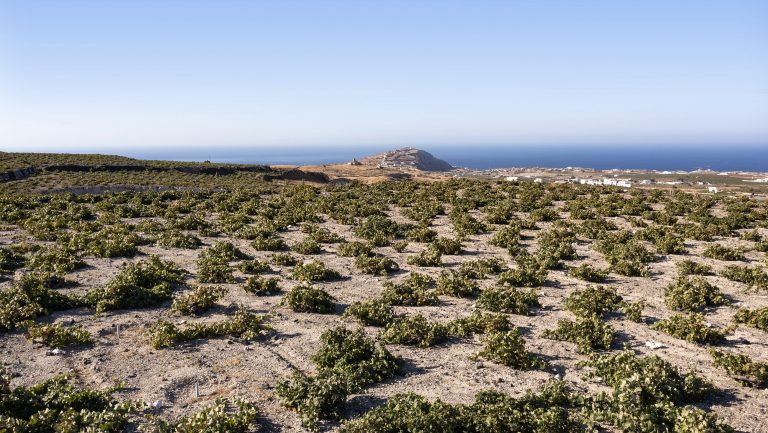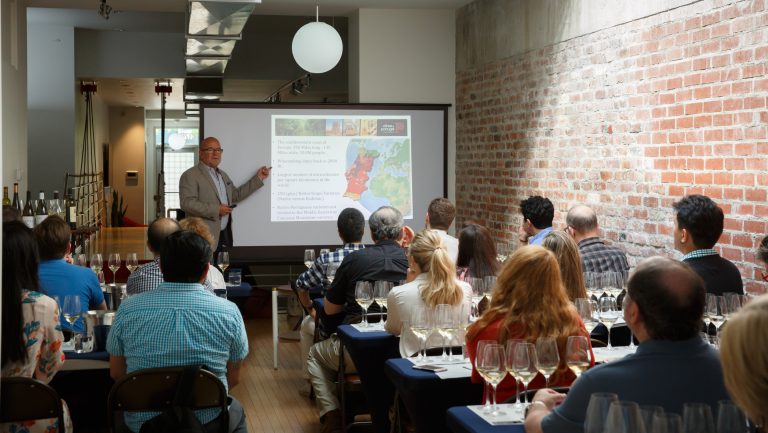This advertising content was produced in collaboration with our partner, Santorini Volcanic Terroir.
Nestled in the cerulean embrace of Europe’s Aegean Sea, the island of Santorini greets visitors with its iconic whitewashed buildings perched dramatically on volcanic cliffs. These structures, adorned with characteristic ocean blue domes, echo the enchanting sea that surrounds them. Santorini’s captivating scenery alone secures its position as one of the world’s most sought-after destinations, but its allure reaches far beyond its postcard-perfect aesthetics. Beneath its sun-drenched facade lies a treasure trove of culinary and viticultural wonders.
The island is renowned for its distinctive fava beans, celebrated for their high nutritional value, which makes them an ideal source of plant-based protein, but it also grows tomataki, small tomatoes with a sweet taste and intense aromas—and it is responsible for some of the globe’s most celebrated wines. Through these products, all safeguarded by the strictly regulated PDO Santorini, this Greek island expresses not only its unique flavors, but a millennia-long history.
Indeed, wine production in Santorini boasts a heritage that stretches back thousands of years to the 3rd millennium BCE. This rich viticultural tradition faced a significant interruption due to a devastating volcanic eruption in the 17th century BCE, which wiped out human occupation for nearly three centuries. Yet, from the ashes and lava that covered the island, a remarkable winegrowing region was reborn, a rebirth that not only preserved the typicity and excellence of its wines, but further enhanced the quality of its food products too, creating an unparalleled culinary and viticultural culture.

Don’t miss the latest drinks industry news and insights. Sign up for our award-winning newsletters and get insider intel, resources, and trends delivered to your inbox every week.
Assyrtiko, Santorini’s Star Grape
Today, the vineyards of PDO Santorini span approximately 1,200 hectares, mostly in the hands of family-owned estates, which extend to the neighboring small island of Thirasia. An astounding 70 percent of these vineyards are devoted to the cultivation of Assyrtiko, the shining star grape variety of PDO Santorini.
Assyrtiko vines yield white wines of remarkable power and intensity. When young, Assyrtiko wines can exhibit a steely and austere personality, a strong structural foundation, deep notes of citrus fruit, and a distinct saline minerality that reflects the unique terroir of Santorini. Winemakers often choose to age these wines on fine lees and, at times, in oak barrels, resulting in a creamier and richer profile. Some of these richer wines are labeled as “Nykteri”, a term used to describe dry wines from PDO Santorini with a minimum alcohol content of 13.5% ABV and a maturation period of at least three months in oak barrels. Regardless of the chosen style, the finest Assyrtiko wines typically require maturation in the bottle to mellow and evolve. Over time, they develop complex aromas of honey, dried fruit, nuts, herbs, spices, and a profound minerality.
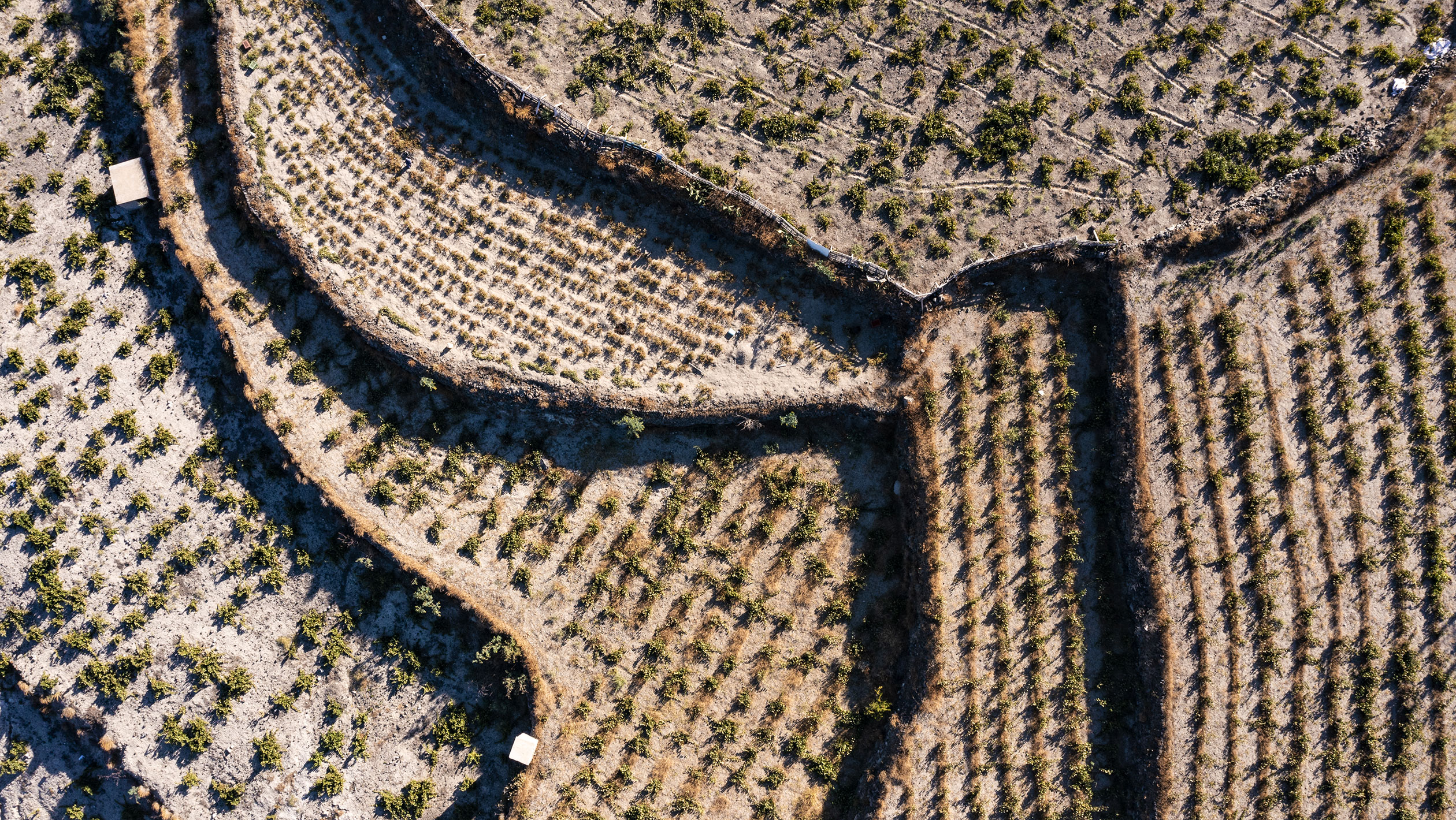
While many of the island’s dry white wines are crafted exclusively from Assyrtiko, some feature a blend that includes up to 15 percent of two other native grape varieties: Athiri and Aidani. In addition to its exceptional dry whites, Santorini also prides itself on its Vinsanto sweet wines. These are crafted from 51 percent of Assyrtiko blended with other local varieties including Gaidouria, Katsano, Moschato Aspro, Monemvasia, Platani, Potamisi, Roditis, as well as Aidani and Athiri. The grapes are left to shrivel under the late summer and fall sun. The drying process concentrates their sugar content, but also acidity levels and flavors, meaning that although they are quite sweet, they retain remarkable balance. The resulting aromatic profiles are complex, reminiscent of dried fruits, honey, caramel, coffee, nuts, and spices, culminating in a lingering finish.
A Unique and Challenging Terroir
The volcanic terroir of Santorini significantly influences the character of its wines. In many volcanic vineyards around the world, basaltic soils, often rich in clay, are common. These fertile clay-rich soils can lead to higher grape yields but potentially result in diluted flavors. Moreover, clay soils can create a welcoming environment for the notorious vine pest, phylloxera. Santorini’s soil is unique, however, in that it consists of a mixture of basalt elements embedded in a deep layer of volcanic ash or sand that covers the island. This type of soil is known for its low water retention and minimal organic matter, which contributes to the extremely low yields of Santorini’s vines, and, in turn, explains the profound character and remarkable structure of its wines. Another critical feature of Santorini’s sandy soil is that it is inhospitable to phylloxera. As a result, vines in PDO Santorini are self-rooted and do not need to be grafted onto phylloxera-resistant rootstocks.
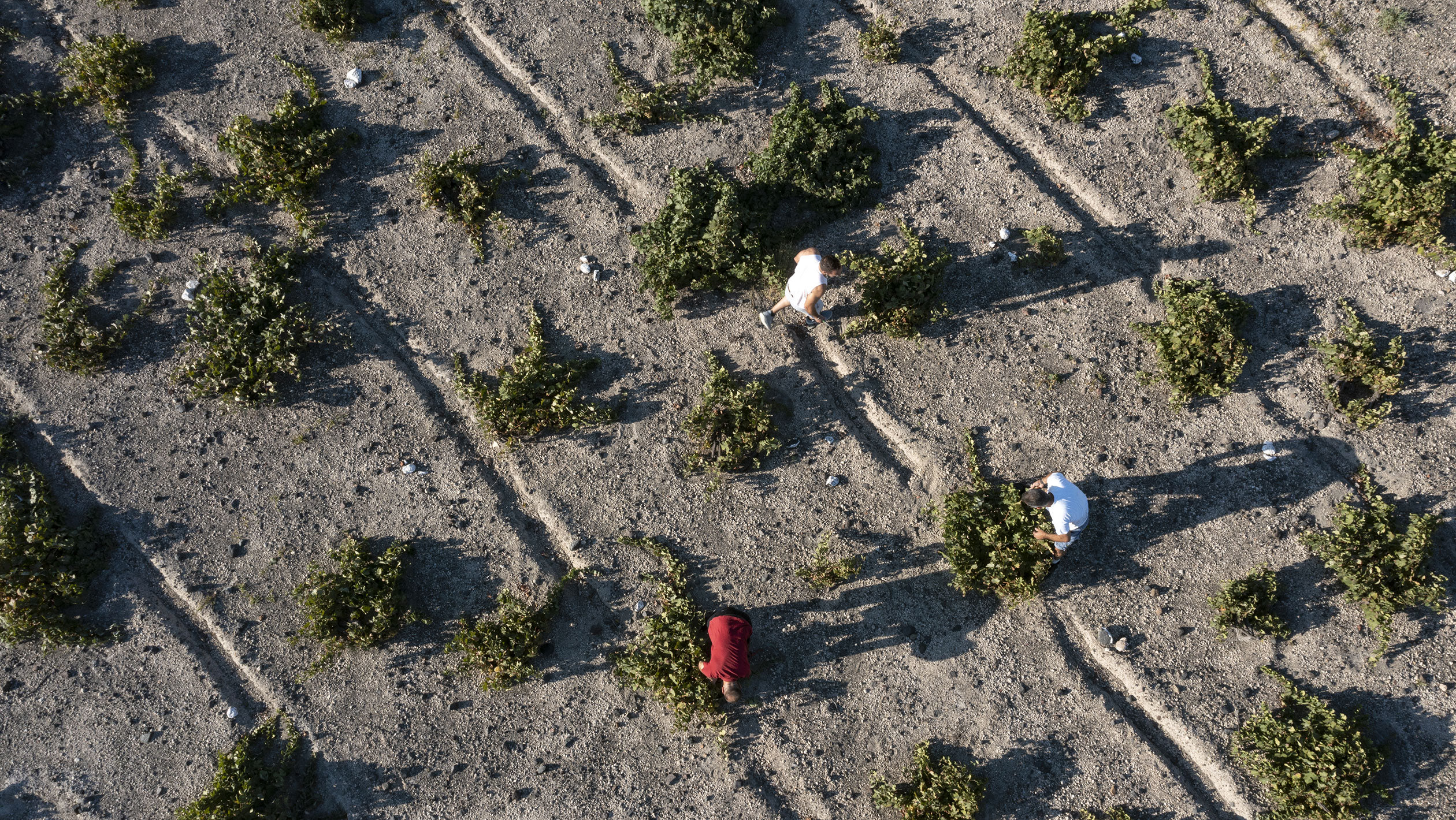
Cultivating grapes on the island presents its own set of challenges. The strong summer winds, locally known as meltemia, have prompted growers to develop two unique training systems to shield their vines from the elements. The koulouraki employs low training and a goblet shape, while the kouloura involves vines hugging the ground and forming a spiral knit that resembles a basket to provide support for the grape clusters.
But while the vines require protection from the winds, they also benefit from them. These winds help maintain the naturally high acidity found in Santorini’s grapes and provide protection against botrytis and mildew, thus reducing the need for treatments.
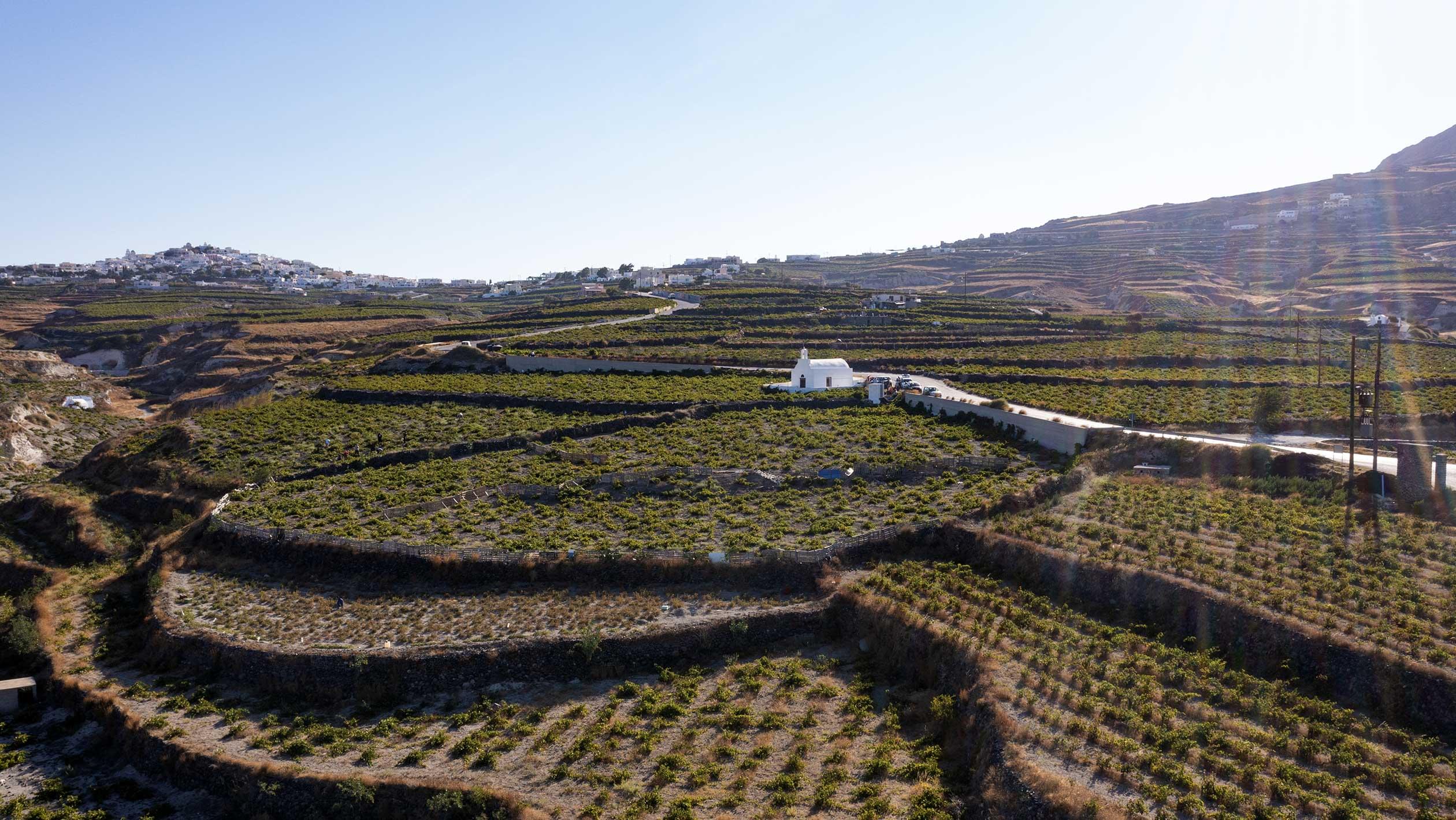
Despite the arid summers, the vines on Santorini are not artificially irrigated. Morning mists, which result from the sea’s evaporation and rise from the caldera, envelop the island and supply the needed moisture. At night, as temperatures cool, the humid climate allows the volcanic soil with its pumice stones to soak up the necessary moisture for the vines. Meanwhile, in areas with substantial slopes, vine growers have built stone terraces known as pezoules to enhance rainwater absorption as well as ease cultivation.
On Santorini, due to its historical training systems and demanding geography, every aspect of the vine-growing process, from pruning to harvesting, must be carried out manually. It’s a labor-intensive and challenging undertaking, but it is precisely the unwavering commitment of the farmers to cultivate this island’s volcanic soil that contributes to the distinctive character and deep cultural and historical value of Santorini PDO wines.

Dispatch
Sign up for our award-winning newsletter
Don’t miss the latest drinks industry news and insights—delivered to your inbox every week.


